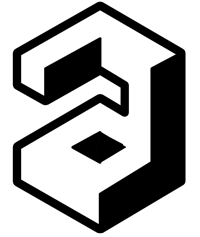Metagenomic Characterization of Planktonic Communities During a Mucilage Event in the Çanakkale Strait (dardanelles), Turkey
No Thumbnail Available
Date
2021
Authors
Journal Title
Journal ISSN
Volume Title
Publisher
Open Access Color
OpenAIRE Downloads
OpenAIRE Views
Abstract
The present study investigates the planktonic communities through metagenomics sequencing during a mucilage event in the Çanakkale Strait (Dardanelles), Turkey. Mucilage samples were collected in May 2021 during an intense period of mucilage formation in three different stations of Dardanelles (Station 1: 40°9'8.09"N, 26°24'16.19"E; Station 2: 40°6'21.62"N, 26°22'41.25"E; Station 3: 40°6'42.78"N, 26°23'57.00"E). The dominant planktonic eukaryotes, at the phylum level, were Dinoflagellata (38.57%), Protalveolata (15.03%), Diatomea (12.41%), Nematozoa (8.44%), Apicomplexa (6.79%) and Chlorophyta (5.43%), which constituted 86.68 % of the total number of sequences. The most dominant OTUs (>10%), were Alexandrium and Syndiniales Group II. other dominant OTUs (>2%) were Viscosia sp., Lankesteria, Arcocellulus, Thalassiosira and Nannochloris. This study has clarified the situation of planktonic communities during a mucilage event in the Çanakkale Strait (Dardanelles), Turkey. As a result, the most dominant genus was Alexandrium, which has been known to produce mucilage. Some Alexandrium species can produce toxins, cause severe impacts on human health, and lead to bivalve, shrimp, and fish mortality. Therefore, a more detailed study is needed to determine the Alexandrium toxins in the mucilage structure. In addition, the heavy metal content of the obtained mucilage was investigated, and the concentrations of the As and Cr are above the disposal limits in the landfill sites. Therefore, collected mucilage from the sea surface should be checked before sending it to landfill sites in terms of the heavy metal content.
Bu çalışmada Çanakkale Boğazı'ında (Dardanel) müsilaj oluşumu sırasında planktonik toplulukların kompozisyonları metagenomik yaklaşımla araştırılmıştır. Müsilaj örnekleri, Çanakkale Boğazı'nın üç farklı istasyonunda (İstasyon 1: 40°9'8.09"K, 26°24'16.19"D; İstasyon 2: 40°6'21.62"K, 26°22'41.25"D; İstasyon 3: 40°6'42.78"K, 26°23'57.00"D) yoğun müsilaj oluşumu gözlemlenen Mayıs 2021'de toplanmıştır. Filum düzeyinde toplam sekans sayısının 86.68% ini kapsayan baskın planktonik ökaryotlar, Dinoflagellata (%38,57), Protalveolata (%15,03), Diatomea (%12,41), Nematozoa (%8,44), Apicomplexa (%6,79) ve Chlorophyta (%5,43) olarak belirlenmiştir. En baskın OTU'ler (>%10), Alexandrium ve Syndiniales Group II olup, diğer baskın OTU'lar (>%2) ise Viscosia sp., Lankesteria, Arcocellulus, Thalassiosira ve Nannochloris olmuştur. Bu çalışma, Türkiye'de meydana gelen bir müsilaj olayı sırasında Çanakkale Boğazı'nda planktonik toplulukların durumunu netleştirmiştir. Sonuç olarak, en baskın cinsin müsilaj üretme kabiliyeti olduğu bilinen Alexandrium olduğu belirlenmiştir. Bazı Alexandrium türleri toksin üretebilir, insan sağlığı üzerinde ciddi etkilere neden olabilir ve çift kabuklu, karides ve balık ölümlerine yol açabilir. Bu nedenle müsilaj yapısındaki Alexandrium toksinlerinin belirlenmesi için daha detaylı bir çalışmaya ihtiyaç vardır. Ayrıca elde edilen müsilajın ağır metal içeriği araştırılmıştır. Müsilajın yapısındaki As ve Cr konsantrasyonları atıklar için belirlenen düzenli depolama sahalarına bertaraf etme sınırlarının üzerindedir. Bu nedenle deniz yüzeyinden toplanan müsilajın düzenli depolama sahalarına gönderilmeden önce ağır metal içeriği kontrol edilmelidir.
Bu çalışmada Çanakkale Boğazı'ında (Dardanel) müsilaj oluşumu sırasında planktonik toplulukların kompozisyonları metagenomik yaklaşımla araştırılmıştır. Müsilaj örnekleri, Çanakkale Boğazı'nın üç farklı istasyonunda (İstasyon 1: 40°9'8.09"K, 26°24'16.19"D; İstasyon 2: 40°6'21.62"K, 26°22'41.25"D; İstasyon 3: 40°6'42.78"K, 26°23'57.00"D) yoğun müsilaj oluşumu gözlemlenen Mayıs 2021'de toplanmıştır. Filum düzeyinde toplam sekans sayısının 86.68% ini kapsayan baskın planktonik ökaryotlar, Dinoflagellata (%38,57), Protalveolata (%15,03), Diatomea (%12,41), Nematozoa (%8,44), Apicomplexa (%6,79) ve Chlorophyta (%5,43) olarak belirlenmiştir. En baskın OTU'ler (>%10), Alexandrium ve Syndiniales Group II olup, diğer baskın OTU'lar (>%2) ise Viscosia sp., Lankesteria, Arcocellulus, Thalassiosira ve Nannochloris olmuştur. Bu çalışma, Türkiye'de meydana gelen bir müsilaj olayı sırasında Çanakkale Boğazı'nda planktonik toplulukların durumunu netleştirmiştir. Sonuç olarak, en baskın cinsin müsilaj üretme kabiliyeti olduğu bilinen Alexandrium olduğu belirlenmiştir. Bazı Alexandrium türleri toksin üretebilir, insan sağlığı üzerinde ciddi etkilere neden olabilir ve çift kabuklu, karides ve balık ölümlerine yol açabilir. Bu nedenle müsilaj yapısındaki Alexandrium toksinlerinin belirlenmesi için daha detaylı bir çalışmaya ihtiyaç vardır. Ayrıca elde edilen müsilajın ağır metal içeriği araştırılmıştır. Müsilajın yapısındaki As ve Cr konsantrasyonları atıklar için belirlenen düzenli depolama sahalarına bertaraf etme sınırlarının üzerindedir. Bu nedenle deniz yüzeyinden toplanan müsilajın düzenli depolama sahalarına gönderilmeden önce ağır metal içeriği kontrol edilmelidir.
Description
Keywords
Çanakkale Strait (dardanelles), Eukaryotic biodiversity, Heavy metal, Metagenomic sequencing
Turkish CoHE Thesis Center URL
Fields of Science
Citation
WoS Q
N/A
Scopus Q
N/A

OpenCitations Citation Count
6
Source
Journal of Anatolian Environmental and Animal Sciences (JAES)
Volume
6
Issue
3
Start Page
421
End Page
427

OpenAlex FWCI
0.693
Sustainable Development Goals
4
QUALITY EDUCATION

6
CLEAN WATER AND SANITATION

8
DECENT WORK AND ECONOMIC GROWTH

9
INDUSTRY, INNOVATION AND INFRASTRUCTURE

12
RESPONSIBLE CONSUMPTION AND PRODUCTION

13
CLIMATE ACTION

14
LIFE BELOW WATER


